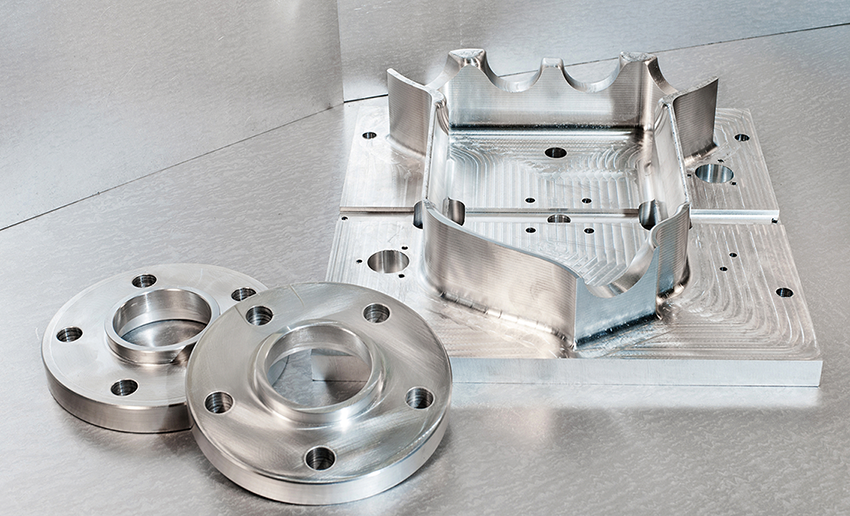
Customize Scale Model Parts—CNC Machining
Advantages of Using CNC Machines for Manufacturing Scale Models
The There are several advantages of using CNC machining to produce scale models:
- Precision: CNC machining is capable of producing scale models with high precision and accuracy, ensuring that the model is an accurate representation of the original object or system.
2.Repetitive Accuracy: CNC machines can produce identical parts consistently and accurately, making it easier to manufacture multiple scale models with the same level of accuracy.
3.Flexibility: CNC machining can be programmed to produce a wide variety of scale models, including those with complex shapes and features, making it a versatile option for designers and manufacturers.
4.Speed: CNC machines can work continuously for extended periods, reducing the time it takes to produce a scale model compared to traditional manufacturing methods.
5.Cost-effectiveness: CNC machining can produce scale models at a lower cost compared to traditional manufacturing methods, such as manual machining, because it can produce parts with less waste, reduced labor costs, and lower tooling costs.
Materials Used for Scale Model Parts
The choice of materials for model car parts depends on several factors such as the desired properties of the final product, the manufacturing process, and the intended use of the model car. Here are some of the most commonly used materials for model car parts:
- Plastics: Plastic is a popular material for model car parts due to its versatility, durability, and ease of use. It can be easily machined or molded into complex shapes and can be painted or finished to create a realistic look.
- Resin: Resin is another popular material for model car parts, especially for creating highly detailed and accurate models. It can be molded into intricate shapes and can be easily painted or finished to create a realistic look.
- Metal: Metals such as aluminum, brass, and steel are often used for creating strong and durable parts such as engine components, suspension systems, and chassis. These materials can be machined to high precision and can be polished or plated to create a realistic finish.
- Carbon fiber: Carbon fiber is a lightweight and strong material that is often used for high-performance model car parts such as racing car bodies, wheels, and chassis. It can be molded or machined to create complex shapes and can be finished to create a high-gloss or matte look.
- Wood: Wood is a traditional material used for creating model car bodies, especially for vintage or classic car models. It can be easily carved or machined to make parts.
- Aluminum
There are several advantages of using aluminum to create model car parts by CNC machining:
A.Lightweight: Aluminum is a lightweight material, making it an ideal choice for model car parts that need to be lightweight and aerodynamic, such as wheels, suspension components, and body panels.
B.Strength and durability: Although aluminum is lightweight, it is also strong and durable, making it a popular choice for creating model car parts that need to withstand stress and high loads, such as engine components and chassis parts.
C.Machinability: Aluminum is a highly machinable material, meaning it can be easily shaped and cut with CNC machining tools. This makes it an ideal material for creating complex and intricate model car parts with high precision and accuracy.
D.Corrosion resistance: Aluminum is naturally resistant to corrosion, making it an ideal choice for model car parts that will be exposed to the elements or harsh conditions.
E.Versatility: Aluminum can be easily anodized or painted, allowing for a range of finishes and colors to be applied to the model car parts. This versatility allows for a customized look and feel for the final model car.
Overall, using aluminum for model car parts by CNC machining offers several advantages, including lightweight, strength, machinability, corrosion resistance, and versatility, making it an ideal material for a range of model car applications.
Car Model Machining-Using CNC Machining
Car model machining is a specialized field of CNC machining that is focused on producing parts and components for automotive applications. Here are some details on car model machining:
- Prototyping: Car model machining is often used to produce prototypes of automotive parts and components. Prototyping allows designers and engineers to test and validate parts before moving into mass production, reducing the risk of costly errors and improving the overall design.
- Production parts: Car model machining is also used to produce production parts for automotive applications. These include parts such as engine components, suspension systems, and body panels.
- Materials: Car model machining can work with a wide range of materials, including aluminum, steel, titanium, and composites. The choice of material depends on the specific application and the desired properties of the part or component.
- Precision and accuracy: Car model machining requires high precision and accuracy to ensure that parts fit and function properly. CNC machines can produce parts with tight tolerances and precise dimensions, ensuring that they meet the required specifications.
- Surface finishing: Car model machining can also produce parts with a variety of surface finishes, including polished, matte, and textured finishes. Surface finishing is important for both functional and aesthetic purposes, as it can affect the performance and appearance of the part.
Overall, car model machining is a specialized field of CNC machining that requires expertise and experience in automotive applications. Car model machining is critical for the development and production of high-quality automotive parts and components.
